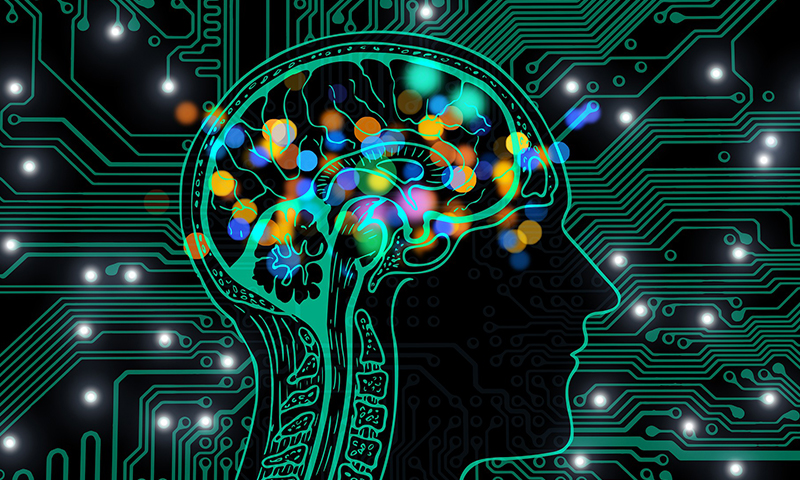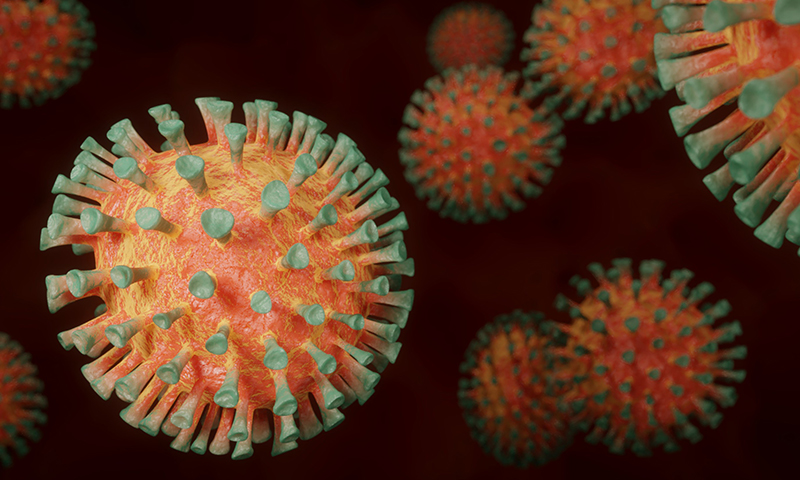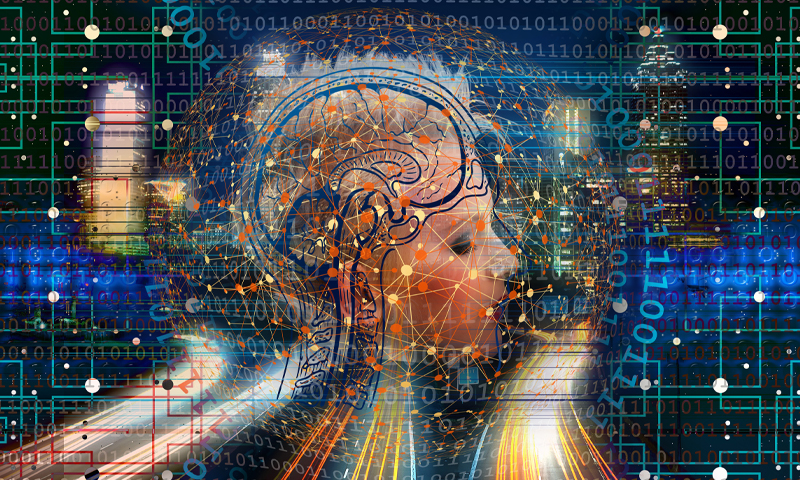As the coronavirus pandemic deepens and as education is reshaped, children are getting more and more acquainted with digital and education technology. Education is relying increasingly on technology since remote learning has replaced formal learning. Learning shifts rapidly from in-person to online learning. During this crisis, two very different fields of research, the brain and the internet can find a point of convergence. Hyper-textuality, multimodality, multireferentiality, complexity of activities, authentic experiences, metacognition are basic principles governing both fields at the same time. It is a great opportunity to combine brain and technology powers in order to cultivate what Marc Prensky defines as “digital wisdom” expanding our online universe.
This change has advantages and drawbacks that are associated with online remote learning. Children acquire digital skills as long as they have the financial and social background to keep up with the newest developments in education. Other children who come from an underprivileged social background can get totally disconnected even from basic and elementary learning. Under these circumstances, the digital divide becomes even more obvious and has more serious consequences on children’s education.
Besides, we should have in mind that the new way of approaching education places more demands on students’ learning skills. Some of them will not be able to follow their classmates since they lack the skills needed for attending e-classes and participating to online learning.

At the same time, great changes in the human brain take place because of the increased use of digital tools in the learning process. Learning is a process that takes place in the brain. It can be defined as the transformation of already existing cognitive structures or the construction of new ones. In recent years, the aim of neuroeducation and neuropedagogy is to modify the methodologies used in teaching according to the progress of functional neuroimaging that allows us to visualize the inner workings of the brain when it learns.
Furthermore, the psychosocial impact of the confinement is undeniable: elevated rates of stress, isolation, loneliness. The coronavirus pandemic affects the mental health of children, a factor that can inhibit effective learning. A child’s brain has a lot to process: the fear of the virus, school closure, the abrupt interruption of routine activities, the lack of the physical presence of friends, risky final school exams, and even the financial distress of the family. All the above can interfere in the learning process, which requires concentration, peace of mind and dedication.
According to neurobiology, fear and threat response are complex phenomena. The brain regions involved in threat response and fear are not organized into a single fear circuit but by several circuits in parallel. The major regions where fear stimuli take place include the sensory cortex (stimulus awareness), hippocampus (memory of associated stimuli), amygdala (quick evaluation of danger), prefrontal cortex (integration and conscious decision-making), and hypothalamus (release of stress hormones). The most important role during fear processing is played by the amygdala, a component of the limbic system, the centre of emotions.
Furthermore, a part of the brain that is involved in scanning the environment for danger and in filtering useful information for fear is the Reticular Activating System (RAS) which is nowadays more developed in children than in adults. The reason is the fact that children are more exposed to constant messaging and a fast-pace of every-day life, therefore they process information more quickly. Therefore, children are more vulnerable to fear.
According to recent research, people during confinement show anger, anxiety, depression, frustration and confusion, symptoms similar to post-traumatic stress disorder. A traumatic situation is usually violent, it is a distressing event that overwhelms an individual’s ability to cope, breaks its expectations about his life causing feelings of helplessness, reduces their sense of self and increases uncertainty. Traumatic stress influences brain development and is usually associated with lasting changes in brain areas.
We are living through the world’s largest home-schooling experiment and at the same time an unprecedented social experiment revealing our need for human connection. In this new reality, new challenges are being created that are causing tensions in the educational process, a process in which one finds it difficult to maintain the balance and equality of opportunity between students.

Although remote learning cannot replace classroom teaching, it is the only tool we have at the moment. It is a new process in relation to which most teachers have no experience. The methodology, techniques and procedures are completely different from the formal teaching in the classroom.
Below there are some suggestions to teachers in order for them to cope with these difficult times and help them go through this transitional phase with success.
- Apply Brain-Based Learning/Teaching Strategies
During this crisis, it is more important than ever to associate teaching strategies with the principles of the brain-based learning and recent findings of neuroeducation. Brain-compatible learning is a set of principles based on the underlying biology of learning and explains how the brain learns. Times we are going through is challenging for the human brain, so brain-based teaching is the key to success.
- Create Communities and Support System
The lower the stress is, the better the learning process is. The most rational decision-making part of our cortex, the pre-frontal cortex, is affected in a negative way by hormones during prolonged stress. Therefore, our capacity for decision-making and critical thinking is partially disabled by fear and stress. For this reason, it is important to create communities and enable social caring measures, prior to teaching sessions. When students are isolated, they face psychosocial challenges that need to be addressed.
- Take Action to Counteract Powerlessness
Action is the best remedy for teachers and students since fear causes a feeling of powerlessness which in turn causes inactivity and passivity. By encouraging students to take action, you train their brain to repeatedly release dopamine, enhancing their energy levels.
- Establish a New Routine
It is important to implement a new routine. Children need structure in their daily lives and a well-organized schedule in online classes is important so children will keep making progress. Remote learning is aimed at a student who is in the environment of his home, an environment that until now was not associated with structured and planned activities such as those that take place in the school.
It is important for the teacher to organize the work with his students in a way that reminds them at least a little, of the structure and organization they experienced in the school space. Therefore, asynchronous training must be combined with the synchronous with a regular program. Structured activities can help children feel more secure.
- Develop Social Skills
Teachers should place emphasis on teaching students how to develop empathy, solidarity, and altruism. When somebody feels alone, focusing on other people’s needs is the first line of their defence. Our brain is social, it evolves and learns through interaction and experiences with others. Learning cannot progress well when students feel isolated and lonely. The brain seems to like learning from others. Natural development alone is not enough. Social distancing is only physical, and it should not lead to isolation.
Through online collaborative platforms, children can develop communication and collaboration with their peers. Communication tools, like bulletin boards, chat channels and discussion groups foster interaction and peer-to-peer support. Furthermore, the value of teacher collaboration within the framework of the new global education landscape is of critical importance.
- Be Honest and Straightforward in Your Communication
Try to explain to students in ways suitable for their age about the current events that make it necessary for people to stay home. Teachers should speak to their students with sincerity, honesty, and simplicity about the situation we are experiencing today. In this way, they will fight the panic and the vague fears that a child may have, and they will help them accept the new reality. Our goal is to minimize fear because it is a deterrent to learning. Parent groups can also be a good way to support teachers’ tasks during homeschooling.
- Create Positive Emotions
COVID-19 crisis takes an emotional toll on children. It is crucial to create positive emotions and this suggestion has a universal significance; it is not only restricted to coronavirus pandemic. The role of emotion in learning is very important. Everything we learn is influenced and organized by emotions and states of mind. Feelings and thoughts shape each other, and they cannot be separated. Teachers should start teaching enthusiastically, make sure everyone in the e-class feels comfortable and everyone understands. Such teaching suggests that we care about the learning of each learner separately.

- Make Learning Pleasant
Human brain seeks pleasure. The pleasure centre of the brain, where the reward circuit is located, tends to desire the repetition of the stimulus or experience that causes pleasure. Every pleasant piece of information can cause the release of dopamine, a neurotransmitter that causes feelings of euphoria in the brain with the production of endorphins and activates the limbic system.
Learning is reinforced by challenge and inhibited by threat. Challenging activities could increase attention and improve memorization. The human brain learns optimally-makes a maximum number of connections- when it is intrinsically motivated. Intrinsic motivation is also necessary for student creativity.
The difficulties that currently exist make even more urgent the need to offer knowledge in a way that is understandable and enjoyable. In this way, students will be mobilized, and higher goals will be achieved than expected. After all, the human brain quickly erases what is not useful, pleasant or what is not meaningful to the person who is learning
- Develop Self-Awareness
Encourage students to express their feelings and promote self-awareness and self-management. In this way, tension will be reduced, and learning will reach an optimal level. Teaching students about self-care will give them a sense of control during a very uncertain time. Therefore, social and emotional learning, as well as the development of emotional intelligence, should be the priority during teaching not only for students but also for teachers who should spend time on their own self-awareness, practice empathy and share with others their personal concerns and internal thoughts.
- Create a Safe Environment
Our brain seeks security, so we have to reassure students that everything is going to be alright. Furthermore, students are spending a lot more time online and this presents risks and dangers, such as exposure to cyberbullying, harmful content, and violation of their personal information. Teachers in collaboration with parents should inform children about healthy device use and help them learn how to keep personal information private, especially from strangers.
- Plan Your Sessions Carefully
During this crisis, planning is very important. It should depend on the situation and students’ needs. The planning of remote learning sessions may not resemble the regular schedule of schools before the crisis and tends to reshape the existing curriculum. It is also of utmost importance for teachers to explore the varied ways that they can support their students online and offer them a wide range of interesting and useful resources.
During the phase of designing they should keep attention spans in mind. According to research, students lose interest in taking notes after 10-15 minutes and the human brain usually stays alert for 10 minutes. The challenge is to find a way to maintain and develop people’s attention during a given time. In order to ensure students’ engagement teachers could include virtual break-up rooms, the use of polls and the creation of narratives for each class. They should set clear rules of interaction from the beginning and promote peer interaction through debates and exchange of ideas.

- Adopt an Appropriate Methodology
Great emphasis should be placed on choosing the appropriate methodology because what works well in the classroom may not be suitable for remote learning. The appropriate methodology is what fits best to the needs, rhythm and interests of both teachers and students. The coordination of synchronous and asynchronous teaching is very important because with the help of teleconferencing the teacher can discuss the tasks assigned to the children.
Assignments and activities given to students should not need special intervention from parents, should respect the material already taught and should not require skills much above average so that the parents are not forced to intervene as teachers because in this case we will have students at different speeds.
- Give Your Students Feedback
Feedback to students is important because according to neuroscientists positive feedback puts more energy into our behaviour, increasing our self-efficacy. We need constant feedback and interaction with our students. However, overloading students and parents with excessive amounts of challenging homework should be avoided. Our goal should be quality and not quantity. The lesson should be interactive because it is very easy for the student to lose contact with the lesson especially when microphones are turned off and the teacher teaches “ex cathedra”.
- Discuss Discrimination and Stigma
A state of emergency like the pandemic of coronavirus causes discrimination and stigma. Explain to your students that these are natural expressions of fear and that they should not take it personally. Encourage them to express their feelings and teach them to avoid discriminating people because discrimination and stigma can make the situation worse. You could also share narratives, or stories that humanize the experiences of individuals affected by the coronavirus, highlight the importance of an inclusive language that respects and empowers people and correct misconceptions.
- Be a Brain Changer
Remember that teachers are brain changers and great teachers can restructure human brains under any circumstances. Moreover, we should bear in mind that the preponderance of digitalization should not lead in a completely artificial and virtual world, but it should respect human aspects.
COVID-19 has changed lives in unimaginable ways. When the pandemic is over, we do not know if we will go back to our usual routine or if our life will be radically transformed. It is very probable that we are going to see rising unemployment and recession that will certainly place demands on the school system. School is a part of society and it has to follow all the changes that take place.





